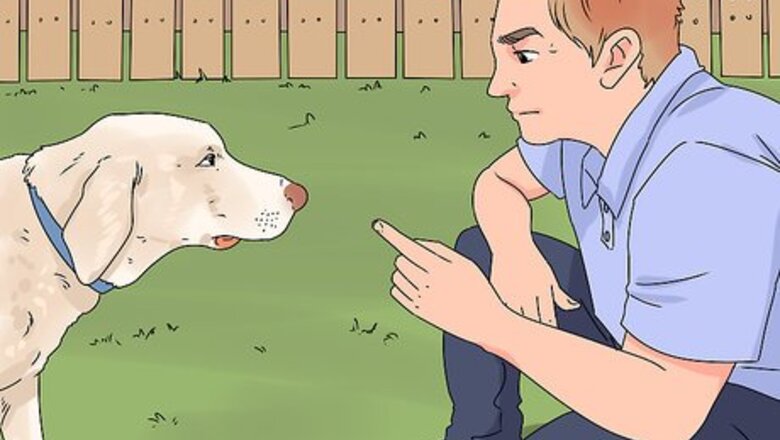
views
Applying General Training Principles

Manage your expectations and mood. Not every training day is going to be perfect, but don’t get frustrated and don’t take it out on your dog. Adjust your own behavior and attitude to encourage your dog’s ability and confidence to learn. If you have a calm mood, generally your dog will, too. If the dog becomes afraid of your bad mood, s/he will not learn anything new. S/he'll only learn to be wary and not trust you. Dog training classes and a good trainer can help you improve your behavior which will translate to success with your dog.
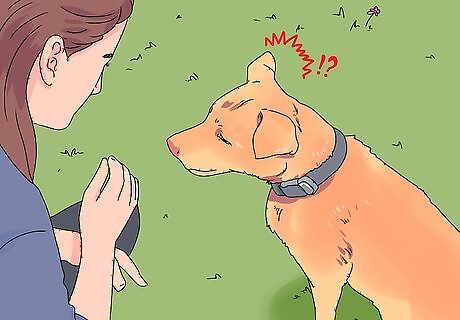
Keep your dog’s temperament in mind. All dogs have different temperaments. Just like kids, different breeds learn differently and at different rates. Some dogs are stubborn and will challenge you at every turn. Others will bend over backwards to please you. You may need to adjust your training techniques to meet the need of your dog’s temperament.
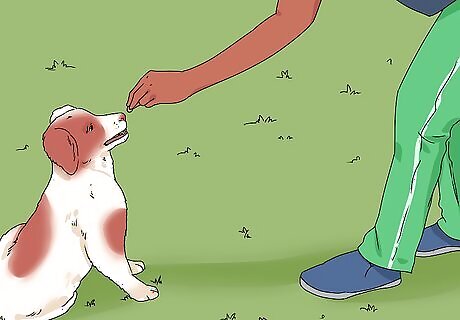
Give immediate rewards. Dogs don’t understand long-term cause and effects. They learn fast. You must praise or reward your dog within 2 seconds of a desired behavior to reinforce that behavior. If you wait too long, s/he will not associate the reward with the action you asked him to perform. Furthermore, you must make sure that your praise is fast enough to be accurate. Otherwise, you may reward behaviors that you don't want. Imagine, for example, that you are teaching your dog the “sit” command. S/he sits for just a moment, but by the time you praise and reward him/her, s/he's started standing back up. In this case, you are rewarding the standing behavior, not the sitting behavior.
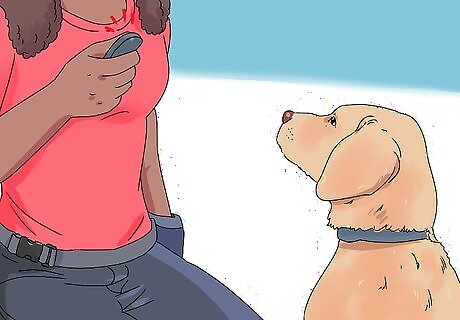
Consider clicker training. Clicker training is a method of delivering immediate praise with the help of a clicker. You can click faster than you can give a treat or pet your dog's head. As such, clicker training reinforces good behavior fast enough for a dog's learning speed. It works by creating a positive association between the click sound and rewards. Eventually, your dog will consider the sound of the clicker itself reward enough for good behavior. You can apply the principle of clicker training to any dog command. Click the clicker device, then immediately give the dog a treat. This creates a positive association with the click sound. Later, that sound will “mark” a behavior as correct so the dog knows that s/he did something right. When the dog performs a desired behavior, make the click sound, then give him a treat. Once s/he's performing that behavior consistently, you can give the behavior a command name. Begin tying the command and the behavior together with the help of the clicker. For example, before you ever teach your dog the "sit" command, give the click sound, a treat, and praise when you find him/her sitting. When s/he begins sitting just to get the treats, start saying the word "sit" to get him/her into position. Pair it with the click sound to reward him/her. Eventually, s/he will learn that sitting in response to the "sit" command will earn him/her a click reward.
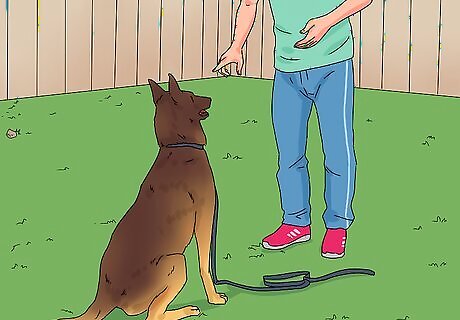
Be consistent. Your dog won’t understand what you want from him/her if his/her environment lacks consistency. Everyone who lives with your dog should understand and be on board with his/her training goals. For example, if you are training your dog not to jump on people, don’t let the kids allow the dog jump all over them. This will undermine all the training you’ve done. Make sure everyone uses the exact commands your dog learns in training. S/he doesn’t speak English, and can’t tell the difference between “sit” and “sit down.” Using those terms interchangeably will only confuse him/her. Because s/he won’t make a clear connection between a single command and a single action, his/her response to the command will be hit or miss.

Always reward success and good behavior with praise, and sometimes a small treat. Small treats help motivate your dog to learn his/her training. The treat needs to be small, tasty, and easily chewed. You don't want it to interrupt the training session or make them full too quickly. Consider how long it takes to chew a hard treat versus a semi-moist treat like “Bill Jack” or “Zuke’s Mini Naturals.” Treats about the size of a pencil eraser head are enough to get the positive point across, and you don't have to wait long for your dog to eat it.

Use "high value" treats when needed. When teaching difficult or important a command, use a “high value” treat to raise the stakes for him/her. Examples include freeze-dried liver, roasted chicken breast chunks, or slices of turkey lunch meat. As the dog learns the command, phase out the high value treats and bring them back as needed to advance your training, but always give him/her praise.
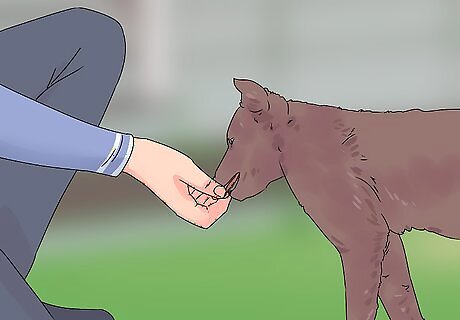
Train on an empty stomach. Don't feed as large a meal as usual a few hours before training your dog. The more your dog wants the treat, the more focused s/he'll be on the task s/he needs to perform to get it.
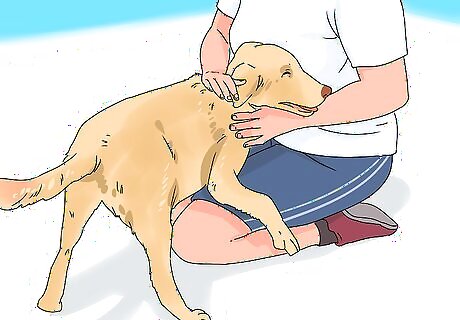
Always end training on a positive note. Even if the training session did not go well and your dog didn't catch on to a new command, end on something that you can praise him/her for. By ending the training session with a command s/he's already mastered, the last thing s/he remembers will be your love and praise.

Discourage barking. If your dog barks at you when you don't want him/her to, just ignore him/her until s/he stops, and then reward him/her with praise. Sometimes they bark at you for attention, while other times it may be out of frustration. Do not throw a ball or toy. This only teaches him/her that if he barks, s/he'll get you to do something s/he wants. Don't yell at the dog to be quiet, as this rewards him/her with attention.
Teaching the “Heel”
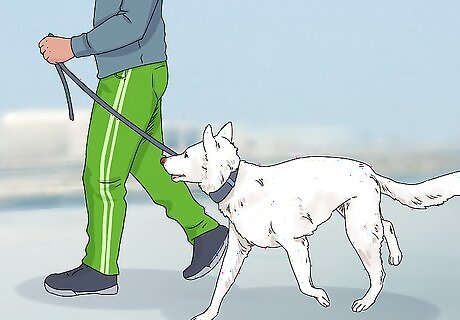
Take your dog on regular walks with a leash. This is important not just for training, but for his/her physical and mental health. Depending on what breed of dog you have, he may need a lot of exercise to keep him/her happy and in shape.
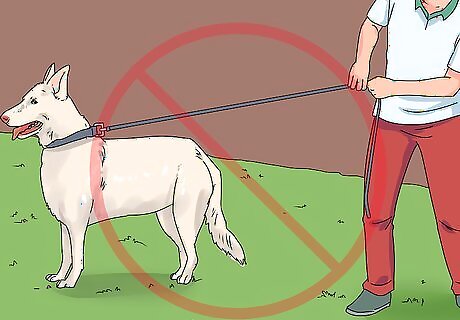
Discourage pulling. Most dogs will pull on the leash when they're learning to take walks. When s/he starts pulling, stop immediately. Don't take another step until the dog comes to your side and focuses his/her attention on you.
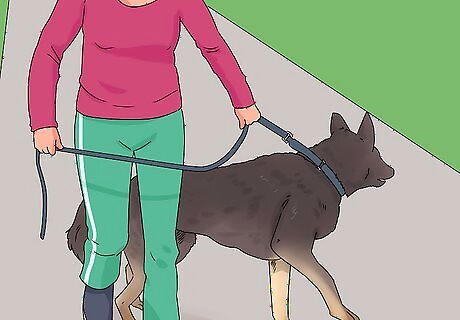
Change directions. An even more effective method is to walk in the opposite direction and encourage your dog to come with you. Once s/he's caught up, praise and treat him/her.
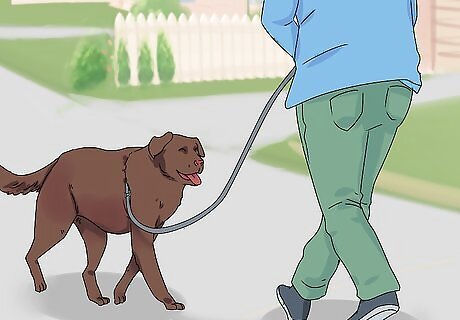
Make it fun to be by your side. Your dog's natural impulse is to chart his/her own course and investigate his environment. You need to make walking by your side more appealing that that. Use an enthusiastic voice when changing directions, and lavish him with praise when he comes back to your side.
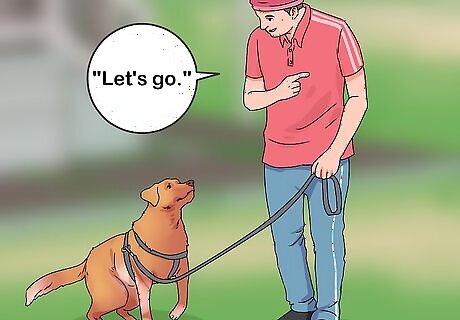
Pair the behavior with a verbal command. Once the dog walks consistently at your side, you can give the behavior a name, like “heel" or “let’s go.”
Teaching the “Come”
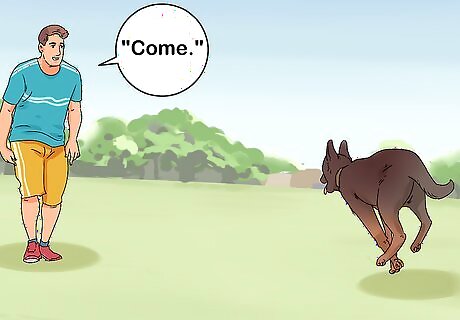
Understand the value of the command. The “come” is used whenever you want your dog to come to you. This command is potentially life-saving, as it can prevent your dog from running off if he gets loose.

Prepare your dog for “come” training. You always want to start training indoors (or in your fenced yard) with low distraction. Attach a 6-foot leash to your dog’s collar so that you have a way to keep his attention and prevent him from running away.

Attract your dog’s attention. You want to make him run toward you. You can do this with high-pitched noises associated with play, with a toy, with an excited clap, or just opening your arms. Running a short distance away from him and then stopping can also work, as dogs will naturally start to chase. Use praise and your “happy voice” to encourage him to move toward you.
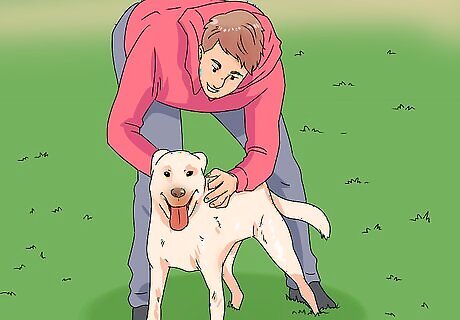
Give immediate praise. Sound your clicker, give him praise in your “happy voice,” and give him a treat when your dog reaches your side.
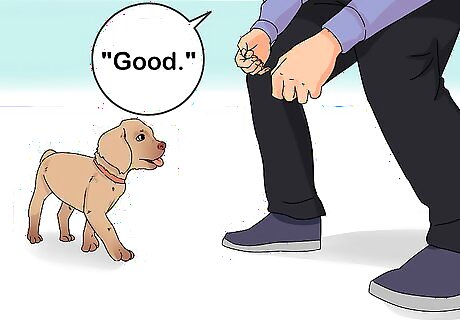
Pair the behavior with the verbal command. As your dog begins to realize he’ll be rewarded for coming to you, start giving the verbal command “come.” When he responds to the command, reinforce it in praise by pairing it with “good”: “good come!”
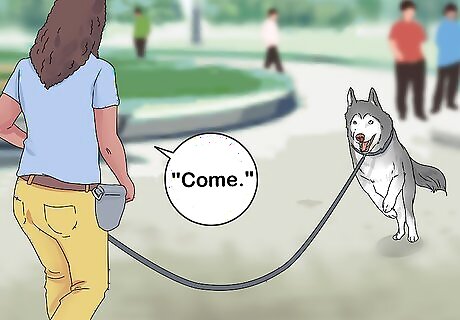
Move the training to more public spaces. Because the “come” command could save your dog's life, he must learn to respond to it even when he's distracted. Move the training sessions from your home or yard to a public park. There are more sights, sounds, and smells demanding his attention there.
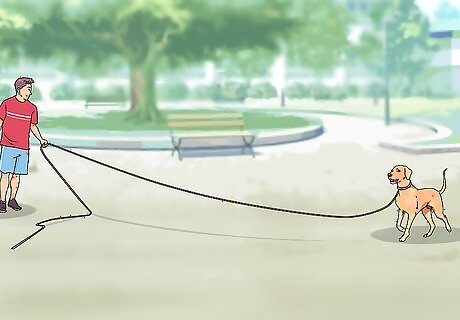
Increase the leash length. You began training with a 6-foot leash, but you want your dog to come longer distances than that. Try attaching two leashes together to increase the distance.
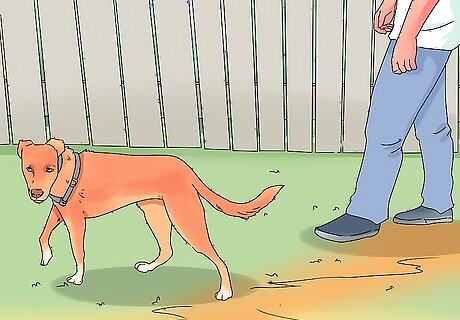
Work up to training your dog off the leash in a fenced environment. This will teach him to come over long distances. Ask someone to help with off-the-leash training. You can play “ping pong” and take turns calling the dog to each of you.
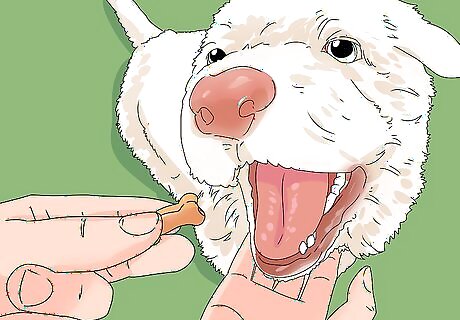
Give enormous rewards. Because this command is so important, the praise you give for performing it should be extravagant. Responding to the "come" command should be the best part of your dog's day.
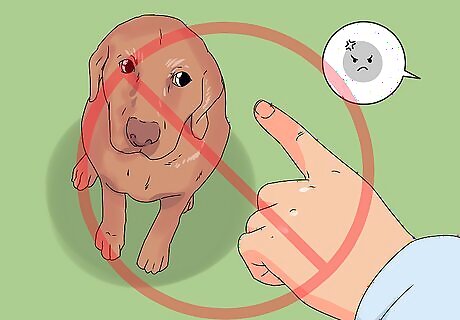
Do not create a negative association with this command. No matter how upset you are, never reinforce the "come" with anger. Even if you're furious that your dog slipped the leash and ran free for five whole minutes, lavish him with praise when he finally responds to the "come." Remember that you're praising the last thing he did did, and the last thing he did was to come to you. Don’t ever correct, yell, yank or in any way make coming to you a bad thing. You can undo years of training with one bad experience. Never do something your dog won't enjoy after giving a "come." Though you may be tempted to give the command when you need to give him a bath, trim his nails, or cleans his ears, the "come" should always lead to joy. If you have to do something your dog won't like, just go and get the dog yourself instead of giving the command. Praise the dog along the way for being calm and accepting of the task. You can use treats, of course.

Go back to basics. If you have a scare where your dog runs loose and ignores the "come" command, go back to leash training. Continue working on the leash until he responds reliably to the "come." Don't rush the training on this command. It's too important to do half-heartedly.

Reinforce the training throughout your dog’s life. Because this behavior is so important, it must be reinforced throughout his entire lifetime. If you take off-leash hikes with your dog, keep treats in your pocket to reinforce the command. You also want a command to let the dog know that it does not have to be right next to you all the time. Something like “free” is one way to phrase it, but the idea is that the dog can do what it wants and is not under command until you give it one.
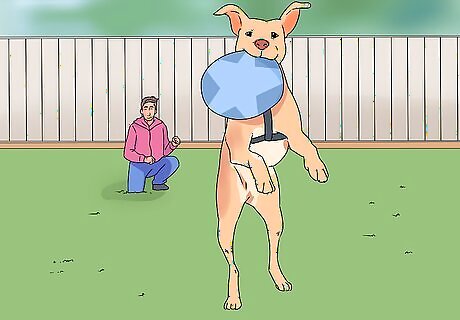
Keep the fun going. You don’t want the dog to think that every time they come to you, the fun stops, someone puts on the leash, and they go back home. Otherwise, you will start to get less reliable and less happy “comes.” So, call the dog, praise them when they arrive and set them “free” to play again.
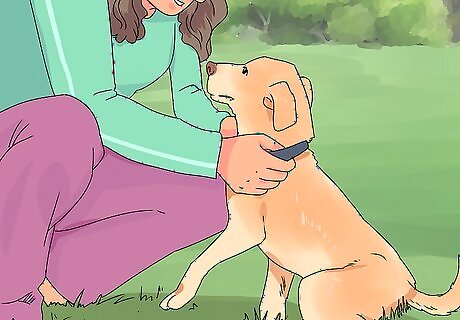
Acclimate the dog to collar grabs. This doesn’t have to be paired with any verbal commands. When the dog comes to you, grab his collar so he doesn’t grow skittish every time he feels someone touch it. When you lean over to reward him for the "come," include grabbing the collar in your hand and petting around the neck as you give him his treat. Once in a while, but not always, the leash should be attached when you grab the collar. Also, you can always attach a short leash and let them “free” again. Leashes should mean fun things are about to happen and we get to go places. There is no room for harsh corrections.
Teaching the “Listen”
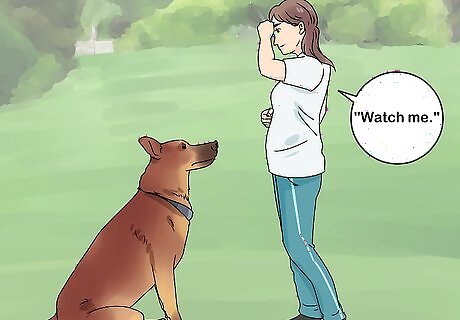
Understand the purpose of the "listen" command. Also known as the "watch me" command, the "listen" is one of the first commands you should teach your dog. You'll use it to get your dog’s attention so you can give him the next command or direction. Some people just use their dog’s name instead of the "listen." This is especially useful if you have more than one dog. That way, each individual dog will know when you want it to focus on you.
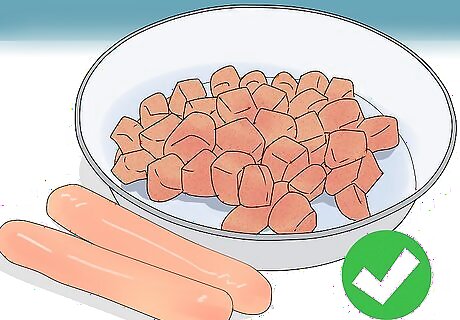
Prepare a handful of treats. These may be dog treats you buy at the store, or hot dogs cut into small pieces. Choose a treat that you know your dog loves and will perform for.
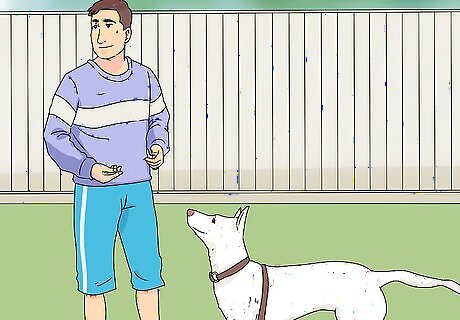
Stand near your dog. Don’t engage with him, though. If he reacts to your presence, stand still and look away until he loses interest.

Say "Listen" in a quiet but firm voice. If you're using your dog's name instead of the "listen" or "watch me" commands, say his name instead. The tone and volume should be the same as if you were calling a person's name to get their attention.

Don't raise your voice to get his attention. Save the big booming voice for “life saving” situations, like if he escapes his fence or leash. If you rarely raise your voice, you'll get your dog’s undivided attention when you do need to yell. But if you are always “loud” to your dog, they will ignore that sound and tune it out. Shouting will no longer be regarded as something that commands special attention. Dogs have excellent hearing — far better than ours. A fun twist on this command is to see how quietly you can whisper and have your dog respond. People will think you are the “dog whisperer” when you can get him to perform commands with hardly a whisper.
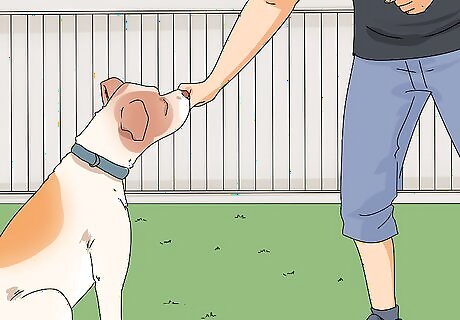
Give an immediate reward for the desired response. As soon as your dog stops what he's doing and looks toward you, praise him and give him a treat. Make the click sound before giving praise or a treat if you're using clicker training. Remember that your response must be immediate. The faster you reward him, the better he'll understand the relationship between command, behavior, and reward.

Discontinue treats eventually. Once he's mastered the command, you shouldn't give him treats for performing it; however, you should still use your clicker or give verbal praise. Weaning the dog off treats is important because he may start to expect treats all the time. You'll end up with a dog who only performs when you have food. Praise your dog regularly even after he's mastered a command, but treat him intermittently. That's the way to keep it solid in his doggy vocabulary. Once he's mastered command, you can use treats to shape the behavior to be faster or more accurate. He will soon realize that the treats come with the command or activity that follows the "listen."
Teaching the “Sit”

Get your dog into a standing position. The purpose of the "sit" is get your dog to transition from standing to sitting, not just continue sitting. Walk into your dog or step away from him to get him into a standing position.
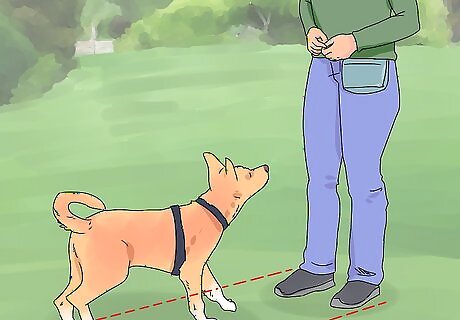
Position yourself in his line of sight. Stand directly in front of the dog so that his attention is focused on you. Let him see that you have a treat in your hand.
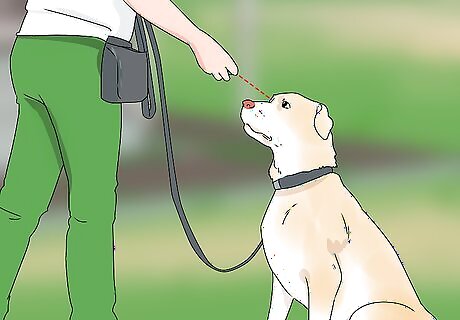
Focus the dog's attention on the treat. Begin with the treat held down at your side. Raise that hand in front of the dog’s nose to let him get the scent, then to above his head level. When you hold the treat above the dog’s head, most dogs will naturally sit to get a better view of it.
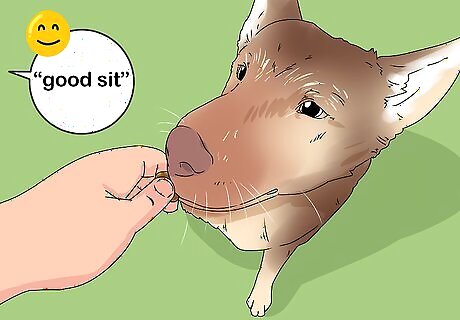
Give him an immediate treat and praise. Follow the routine of clicker-treat/praise or just treat and praise. Say “good sit” when he's performing the behavior you are practicing. He may be slow at first, but more treats and praise will speed up his response. Make sure that you do not praise him until his butt touches the ground. If you praise halfway through the sit, the dog will think that is what you want. Also, make sure that you do not praise him for getting back up, or you will get that behavior instead of the sit.
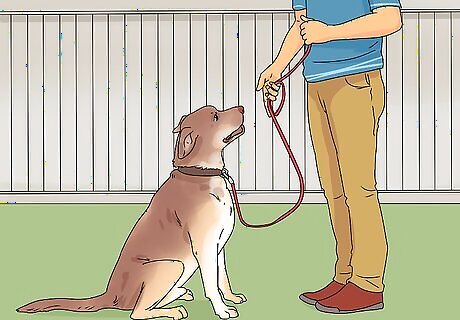
If your dog does not sit with the treat technique, you can use your leash and collar. Stand next to the dog, facing the same direction as him. Place a little backward pressure on the collar to encourage a sit. You may even need to encourage the sit by adding a little gentle scoop behind the dog’s hind legs. Gently lean the dog backward with the help of the collar while doing this. As soon as he sits, give him immediate praise and reward.

Don't repeat the command. You want the dog to respond on the first utterance, not the second, third, or fourth. If the dog does not perform the behavior within 2 seconds of your command, reinforce the command with the help of your leash. When you begin training a dog, never give a command that you are not in a position to reinforce. Otherwise, you risk training the dog to ignore you because there is no follow through from your end and the commands have no meaning. Create a positive meaning for the dog with praise and consistency.
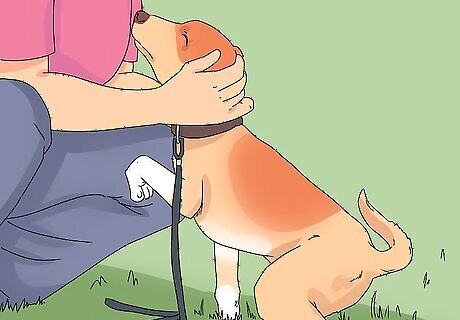
Praise natural sitting behavior. Look for times throughout the day when your dog just sits on his own. Praise that behavior, and pretty soon you'll have a dog that sits for attention instead of jumping or barking at you.
Teaching Your Dog to Lie Down
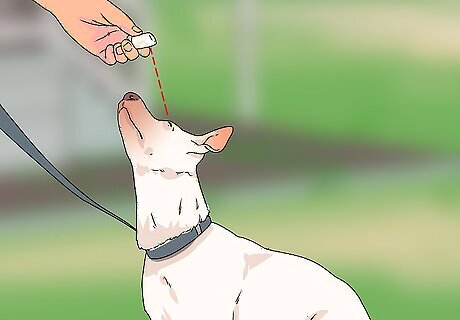
Get your dog’s attention. Get some food treats or a toy and find your dog. Hold the toy or treat in view so he focuses on you.

Use the treat or toy to encourage your dog to lie down. Do this by moving the toy or treat onto the ground in front of the dog, between his front legs. His head should follow it, and his body should follow shortly thereafter.

Give immediate praise. When the dog’s stomach is on the ground, lavish him with praise and give him the treat or toy. Be accurate with your praise, too. If you praise him halfway down or up, that is the behavior you will get.
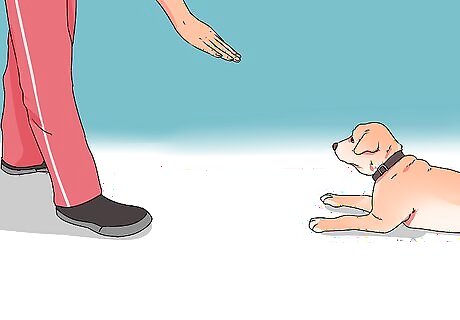
Increase your distance. Once he’s learned the behavior with the promise of a treat below him, move a little farther away. The hand signal for “down” will become your flat hand — palm down — moving in a downward direction from in front of your waist to your side. As the dog gets more consistent with the "down" behavior, add a verbal “down” or “lie down” command. Always praise him immediately when his belly is on the ground. Dogs read body language well and learn hand signals quite quickly.
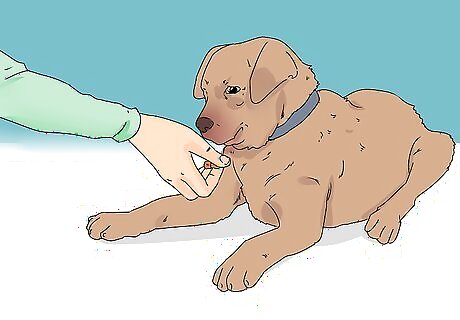
Lengthen the "down." As he gets more reliable with “down,” pause a few seconds before praising and treating to encourage him to hold the position. If he pops up to get the treat, do not give it to him, or you will be rewarding the last behavior he did before the treat. Just start again, and the dog will understand that you want him all the way down on the ground, as long as you are consistent.

Don't lean over your dog. Once your dog has caught onto the command, stand up straight when giving it. If you loom over him, you'll have a dog that only lays down when you are leaning over him. You want to work on being able to get your dog to lie down from across the room, eventually.
Training Your Dog to “Wait” at Doorways
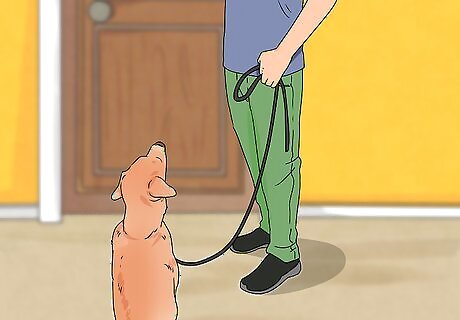
Begin doorway “wait”-training early. Teaching a dog to respect the threshold is important. You do not want a dog that runs out the door every time it opens — that could be dangerous for him. Doorway training doesn't need to happen every single time you go through a doorway. But you should make the most of your training opportunities early in your puppy's life.
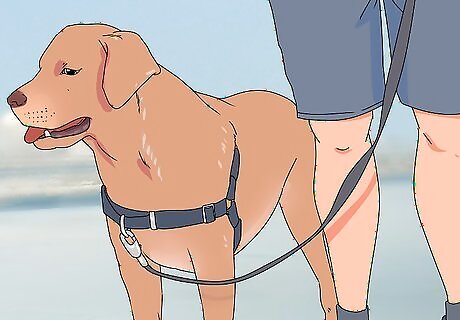
Place the dog on a leash. You should have him on a short leash that allows you to change his direction from a close distance.
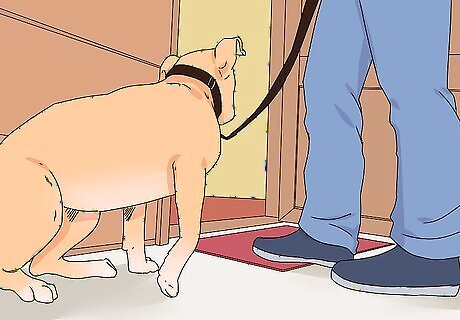
Walk to the door. Bring the dog along with you on his leash.
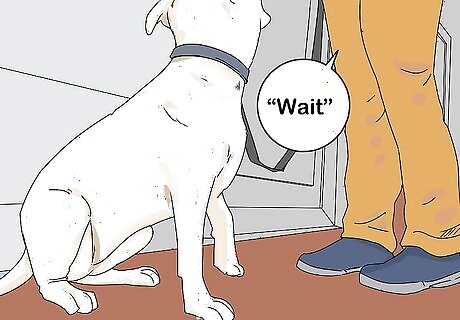
Give a “wait” command before stepping through. If your dog moves to follow you when you step through the door, use the leash to stop his forward movement. Try again.

Praise him when he waits. When he realizes that you want him to stay in the door instead of walking through it with you, lavish him with praise and rewards for the "good wait."

Teach him to sit in the threshold. If the door is closed, you can even teach your dog to sit as soon as you place your hand on the doorknob. He'll then wait while the door is opened, and not cross the threshold until you release him. This training should be done on leash at the beginning, for his safety.
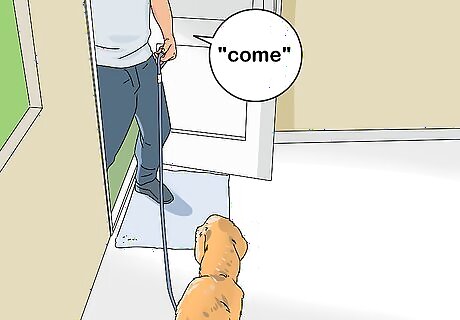
Give a separate command to encourage him through the doorway. You might use a "come" or a "free." Whatever command you use, it should be the only thing that allows your dog to exit your home.
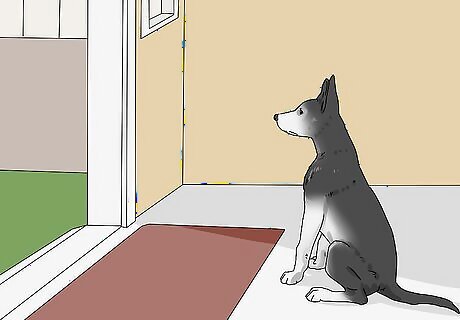
Increase the distance. Practice leaving the dog at the threshold and do something on the other side. You might get the mail or take out the trash before you return and praise him. The idea is that you do not always call him across the threshold to meet you. You can also come back to him.
Teaching Your Dog Positive Food Behaviors
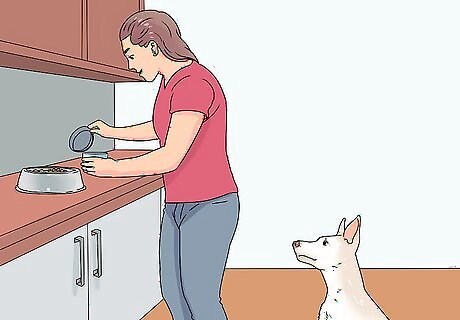
Have him wait patiently while you prepare his meal. There’s nothing more annoying than a dog who jumps and barks while you’re trying to prepare his meal. Instead, use the “wait” command he learned in doorway training to have him wait outside the threshold of the room where he's fed. When you're ready, have your dog work for his food by commanding the dog “sit” and “stay” while you place the food on the ground. Stand up and wait a few breaths before giving your release word. You can use “free” or you can create a new command for feeding time like “get your food” or “yummy.” Try to choose something you wouldn't accidentally say to other people, such as "time to eat," or, "let's eat," as this might falsely cue your dog that it's time for his dinner. Eventually, he will sit on his own as soon as he sees his feeding bowl.
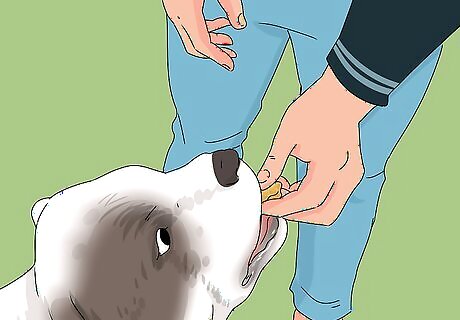
Hand feed your dog. At meal time, start feeding your dog out of your hand. Then use your hands to put the rest of the food in the bowl. This will put your scent on your dog’s bowl and also normalize having your hands around their bowl and food. This should help fix or prevent any food aggression tendencies.
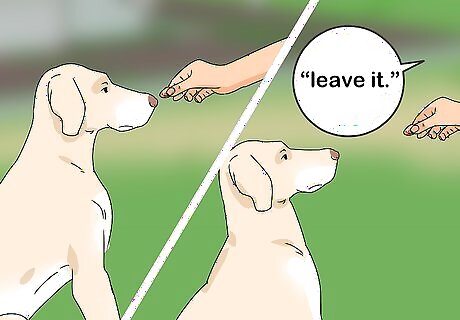
Teach your dog to “leave it.” Teaching your dog to move his nose away from food and other items can be beneficial in a number of situations, including when food is accidentally dropped on the floor during family dinner or when your dog seems interested in picking up something potentially harmful during a walk. To teach this command, do the following: Stage one: Hold a treat in your closed hand. The dog will probably lick, sniff, and paw at your hand in an attempt to get to the treat. Eventually, when the dog moves his nose away, praise him and give him the treat. Stage two: Add in the words “leave it.” Say these words when your dog decides to move his nose away. Stage three: Hold one treat in your palm in front of the dog and one behind you in the other hand. Instruct your dog to “leave it.” If the dog gets too close to the treat, make a fist to hide the treat and say “no” or “uh-oh” to show the dog that he won’t be rewarded or noncompliance. When he obeys the “leave it” command, give him the treat that’s behind your back. Stage four: Place the treat on the floor. Move the treat from your palm to the floor. Continue to reward your dog with the treat you have behind your back. Stage five: Put your dog’s leash on and walk past the treat on the floor. Command him to “leave it” without jerking the leash. If he eats the treat, go back to an earlier stage. Stage six: Start using the “leave it” command outside of your home.
Teaching the “Take” and “Drop It” Commands
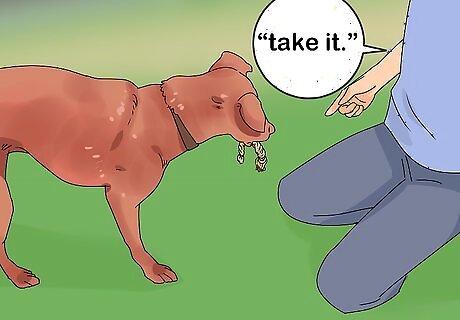
Understand the command. The “take” is used whenever you want the dog to take something you offer into his mouth.
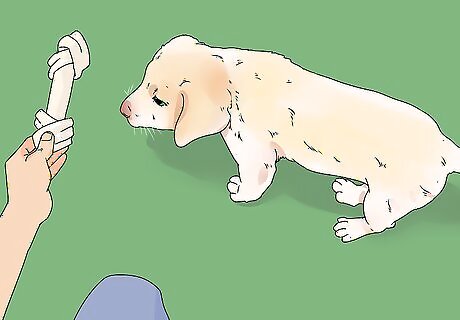
Give your dog a toy to play with. Give him the verbal command “take” as you do so. As he takes the toy in his mouth, reward him for the behavior with praise. (Plus, he gets to play with the toy!)

Transition to less rewarding objects. It's easy for a dog to learn "take" when the object is so much fun! When he's mastered the connection between command and behavior, move on to boring objects. Examples might include newspapers, light bags, or anything else you might want him to carry.

Pair “take” training with “drop it” training. Once he takes the toy, use the command “drop it” to have the dog release the toy back to you. Give him a treat and praise when he releases the toy, then start again with “take.” You don’t want the dog to think that the fun stops every time he releases the toy. Do not get into a tugging match with the dog. When you tug, the dog tugs back harder.
Teaching the “Stand”
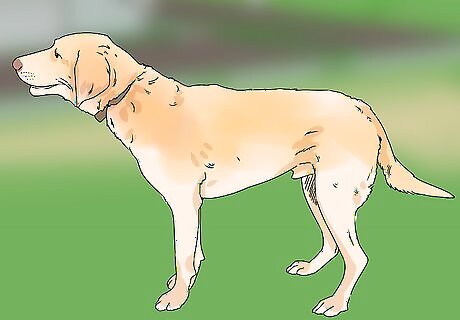
Understand the value of the “stand” command. The value of the "sit" and "wait" seem obvious, but you may not understand at first why the "stand" is an important skill to teach your dog. You won't use the "stand" every day, but you'll need it throughout the dog's life. For example, a dog who can stay calmly in a "stand" is the ideal patient at a vet clinic or client at a groomer's.
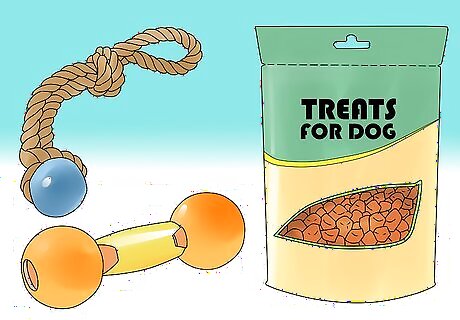
Prepare for the training session. Grab his favorite toy or prepare a handful of treats to both focus your dog's attention and reward him for learning the command. Put the dog in a starting "down" or "lie down" position when working with the "stand" command. He should move from lying down to standing up to get his toy or treats.

Focus the dog’s attention. You want to coax him into the standing position by having him follow the toy or treat. Hold the toy or treat in front of his face, at nose height. If he sits, thinking that will earn him a reward, try again, but with the treat or toy slightly lower.
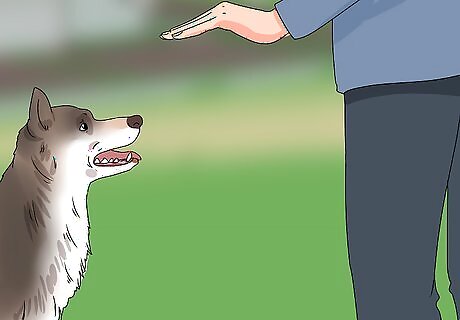
Encourage the dog to follow your hand. Flatten your hand with your palm down. If you're using a treat, hold it with your thumb against your palm. Start with your hand in front of his nose and move it away a few inches. The idea is that the dog will stand up while following your hand. You may need to use your other hand to encourage him from underneath his hips to get the idea at first.

Give immediate praise. As soon as he reaches the standing position, praise and treat. Although you haven't yet started using the verbal "stand" command, you can use it in your praise: "good stand!"
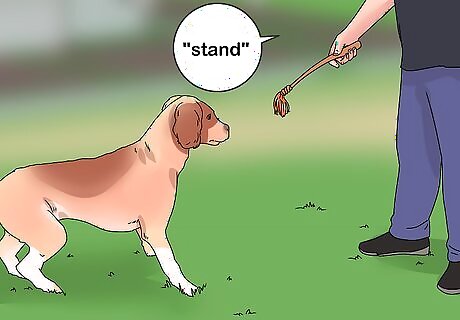
Add the verbal "stand" command. At first, you will work only on getting your dog to stand by following the hand that holds his toy or treat. When he's mastered that concept, begin incorporating the "stand" command into the training sessions.
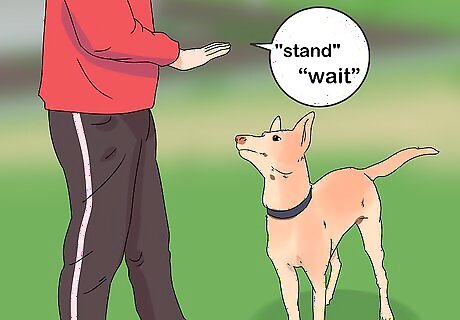
Combine the “stand” with other commands. There are many ways to combine commands. After getting your dog to "stand," you might add a “wait” or “stay” command if you want the dog to stand for longer periods of time. You can also follow with a "sit" or "down" to do some “doggy drills,” and gradually increase the distance between you and the dog. Eventually, you'll have your dog performing these commands from across the room.
Teaching the “Speak”

Understand the command. The “speak” command teaches your dog to bark in response to your verbal cue. On its own, this command is something of a novelty. But in combination with the “quiet” command, it can help manage a barking problem in an overly vocal dog. Take extreme caution when teaching this command. Inexperienced trainers sometimes find "speak" training spirals out of control. They end up with a dog who barks at them all the time.
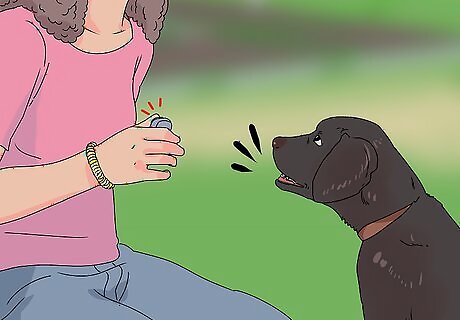
Clicker train your dog. "Speak" training requires immediate praise, more so than other commands do. Teach your dog to associate the click sound with a treat by clicking and treating a few times in a row. Continue this clicker training until your dog sees the click sound as a reward in and of itself. The treat will come later.
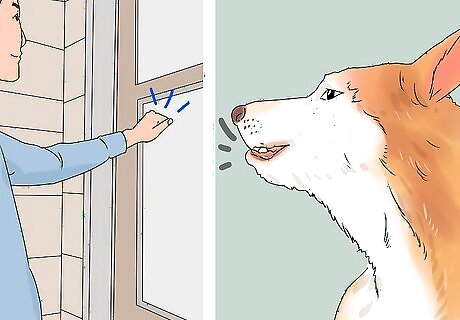
Figure out when your dog barks most. This will vary from dog to dog, so you have to observe your specific pet. He might bark most reliably when you withhold a treat, when someone knocks on the door, when someone rings the doorbell, or when someone honks a horn.
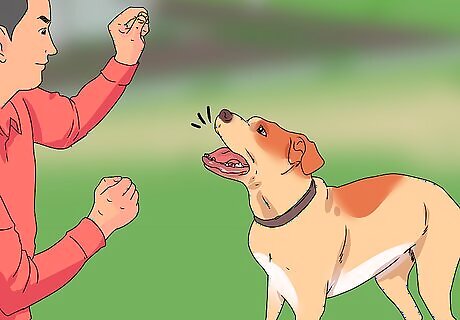
Recreate the triggering event. Once you’ve figured out what makes your dog bark, perform that action in front of your dog. The idea is to encourage him to bark on his own, then praise him for the action. You can see how this might be dangerous in the hands of an inexperienced trainer. That's why "speak" training is a little different from the other commands. You'll incorporate the verbal command from the very beginning. That way, the dog doesn't think you're praising him for his natural behavior.
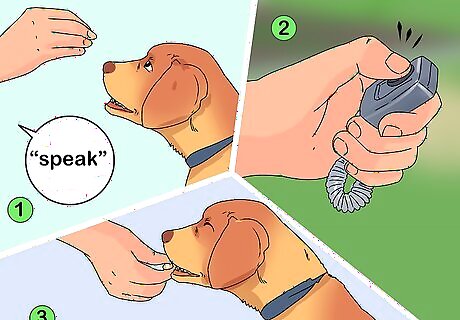
Use the verbal "speak" command from the beginning. As soon as your dog barks for the very first time, give the verbal "speak" command, click, and give him a treat. The other commands thus far have taught the behavior first, then added a command that preceded the behavior. However, "speak" training gets out of hand too easily that way. The dog gets rewarded for barking at first. Thus, it's better to associate the verbal command with the behavior already in progress. Never reward the dog for barking without the verbal command.
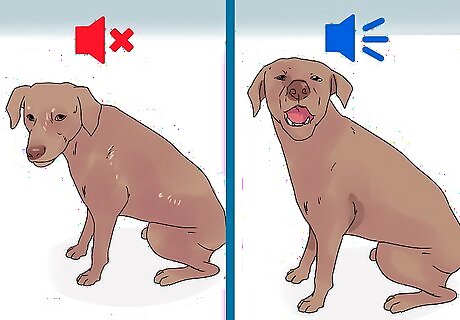
Combine the “speak” with the “quiet” command. If you have a dog who naturally barks too much, you might not think teaching him to "speak" is going to help your situation. However, if you teach him to "speak," then you can also teach him to "quiet." While you may not need the "speak" for a dog who barks too much, you definitely need the "quiet." Once your dog has mastered the "speak," begin incorporating "quiet" into your training sessions. Give the "speak" command. However, instead of rewarding the "speak" (barking), wait until the dog stops barking. Give the verbal "quiet" command. If the dog remains silent, reward the "quiet" (no barking) with a click and a treat.
Crate Training Your Dog

Understand the value of crate training. You might think it cruel to pen a dog up in a crate for hours at a time. But dogs are instinctively den animals, so confined spaces are not as oppressive to them as they are to us. In fact, crate trained dogs will seek out their crates as a source of comfort. Crate training is a useful way to manage your dog's behavior when he's unsupervised for extended periods of time. For example, many owners crate their dogs when they go to sleep or leave the house.
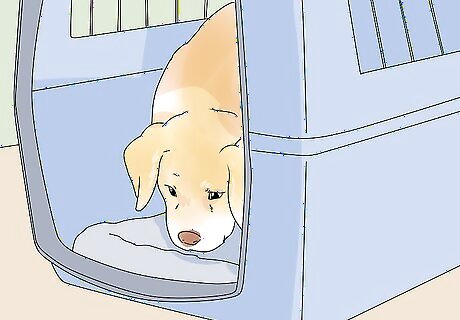
Begin crate training young. Although older dogs can be taught to enjoy their crates as well, it's easier to train a young dog. If your puppy is a large breed, don't train him in a large crate that you think he'll grow into. Dogs won't relieve themselves where they sleep or relax, so you need the crate to be appropriately sized. If you use a crate that's too large, he might urinate in the far corner of it because he has so much space.
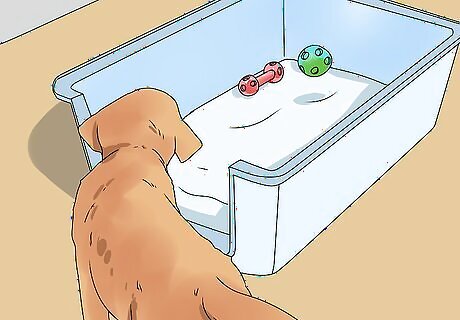
Make the crate an inviting space. Don’t isolate him in the crate immediately by locking the door the first time you get him to enter it. You want him to create a positive association with the crate, so that he enjoys his time in there. When you begin the crate training process, place the crate somewhere the household gathers. The idea is to make the crate part of the social scene rather than a place of isolation. Place a soft blanket and some of your dog's favorite toys inside the crate.

Encourage him to enter the crate. Once you've made the crate an inviting space, use treats to lure him inside. At first, place some outside the door so he can explore the exterior of the crate. Then, place treats just inside the door, so he will poke his head in to retrieve them. As he grows more comfortable, place the treats further and further inside the crate. Do this until your dog enters the crate without hesitation. Always speak in your "happy voice" when acclimating your dog to the crate.
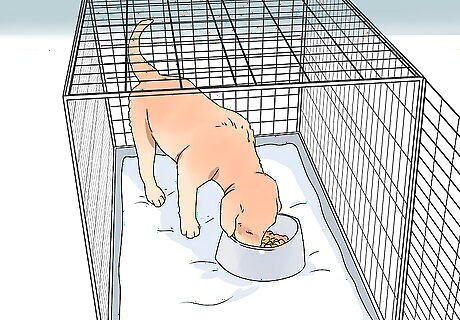
Feed the dog in his crate. Once he's comfortable entering the crate for treats, reinforce the positive association with mealtime. Place his dog bowl wherever he's comfortable eating. If he's still a little anxious, you might have to place it right by the door. As he grows more comfortable over time, place the dog bowl further back into the cage.
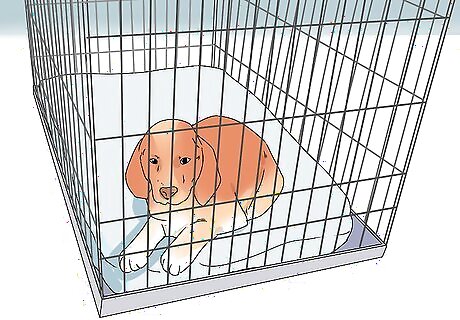
Begin closing the door behind him. With treats and feeding, you'll find that your dog is growing more acclimated to being in the crate. He still needs to learn how to cope with the door being closed. Begin closing the door at mealtime, when the dog too distracted by his food to notice what's going on at first. Close the door for very short periods, lengthening the time as the dog grows more comfortable.
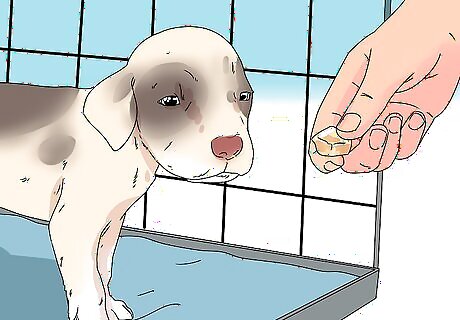
Don't reward the dog for whining. When a puppy whines, it may be adorable and heartbreaking, but when a grown dog whines, it can drive you nuts. If your puppy whines inconsolably, you may have left him inside the crate for too long. However, you cannot release him from the crate until the whining stops. Remember — every reward you give reinforces the dog's last behavior, which was whining in this case. Instead, release the dog once he's stopped whining. The next time you close the door on the crate, leave him in for a shorter period of time.

Comfort your dog during long crate sessions. If your puppy cries when he's alone in the crate, bring the crate into your bedroom at night. Have a tick tock clock or white noise machine to help the puppy get to sleep. Make sure that they have already eliminated outside and don’t need to urinate or defecate. Young puppies should be crated in your room at night so that you can hear them tell you they need to go out in the middle of the night. Otherwise, they will be forced to mess in the crate. EXPERT TIP Sheri Williams Sheri Williams Certified Dog Trainer Sheri Williams is a Certified Dog Trainer and Behaviorist and the Owner of sheriwilliams.com, a business that specializes in teaching veterans how to turn their dogs into service dogs or emotional support animals to assist with PTSD. Based in the Los Angeles, California metro area, Sheri has over 20 years of dog training experience and also runs a general dog training practice specializing in rehabilitating dogs through positive reinforcement training techniques. She is certified by The Animal Behavior and Training Association. Sheri Williams Sheri Williams Certified Dog Trainer Become an expert through in-person training. To become skilled at dog training, it's helpful to do an in-person training program rather than learning online. Real-life experience working directly with the dogs and trainers is invaluable for picking up the nuances of dog behavior and training techniques.




















Comments
0 comment